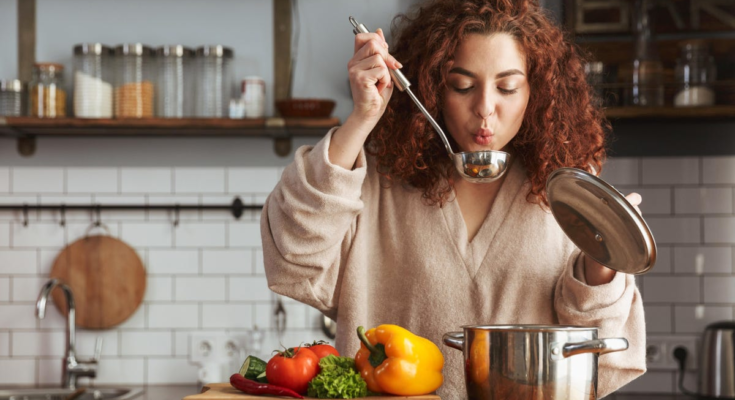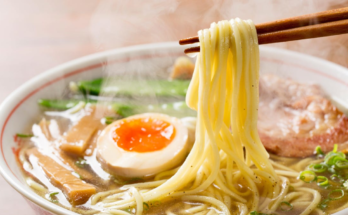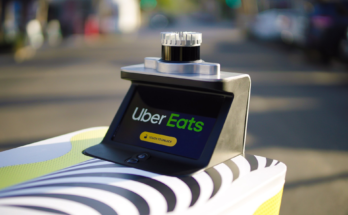
I’m not sure if anyone made resolutions this year. The source of most people’s problems are not tied to anything they can change with enough resolve. One cannot resolve their way out of a pandemic, or resolve their child into a safe learning environment, especially when our governing body is more interested in protecting “the market” than the people they were elected to serve.
If you did make a resolution, it was probably related to a personal project, a daily habit, or your body. These are all things we can exert some level of control over (though the rapid spread of omicron makes even that last one feel like a challenge). If you did make a resolution concerning your level of physical fitness, or your diet, it’s highly likely that cooking for yourself is involved. (Unless you have the resources to outsource your meals and hire a personal chef, or pay for one of those meal kit services.)
I (informally) polled a few coworkers, friends, and family members and, with the exception of my mother, no one is all that excited about cooking, resolution or no. But you have to eat, which means you (most likely) have to cook. Luckily, I have a few strategies for getting excited about—or at least mildly interested in—cooking.
Buy yourself a toy
If you own an immersion circulator, Instant Pot, and/or air fryer, you know how easy it is to get hyper-focused on a new appliance, and try and push the limits of what can be sous-vided, pressure-cooked, and/or air-fried. This can be an incredible source of inspiration in the kitchen, and give you focus in a sea of never-ending recipe blogs, cookbooks, and websites.
But the toy doesn’t have to be a fancy new appliance. It can be something as simple as a new set of measuring spoons, a pretty knife, a mortar and pestle, a sparkly new sheet pan, that Dutch oven you’ve always wanted, or anything else that makes working in the kitchen easier or more appealing.
Sharpen your knives
Chopping and slicing is an integral, unavoidable part of cooking, and dull knives make it more arduous, time-consuming, and dangerous. This video will show you how to sharpen your own knives with a whetstone, but even a simple pull-through sharpener (when coupled with a honing steel) can give you the edge you need to fly through prep work (without hurting yourself).
If you don’t feel like sharpening them yourself, just take them to a knife shop and get it done professionally. There is no shame in outsourcing labor.
Buy an expensive ingredient
Shelling out the big bucks for a well marbled-steak, sea scallops, duck eggs, or a really nice bottle of extra virgin olive oil can feel wasteful, but buying these ingredients and cooking them yourself is still far more cost-effective than dining out, and—as long as you eat it—buying food for yourself is not a waste, especially if it brings you even a small amount of indulgent joy.
Buy the protein, seasonable vegetable, or cooking fat that calls to you, find a well-reviewed recipe for it, and cook it with care. You’ll be surprised by how one good meal can motivate you to cook more often.
Or snag a fancy condiment or pickle
The right hot sauce, chili oil, or fermented vegetable can turn even the plainest bowl of rice into something delicious and special. You can even plan an entire meal around a condiment or pickle to excellent results. Preserved Meyer lemons, salt-packed capers, shio koji, or hot honey all are great jumping off points for experiencing new flavors and cuisines. (Just Google “What do I make with preserved lemons?” and you’re off.)
If you balk at the price, do what I do and compare it to another expense:
If you find yourself thinking “Oh, I don’t know, 10 bucks for a bottle of this super flavorful apple cider vinegar seems a bit much, even though it will get me to eat salads throughout the week,” do what I do and frame that purchase in terms of cocktails (or some other frivolity that you buy without blinking an eye). Whenever I’m balking at a “luxury” food item, I ask myself “How many cocktails would this buy?” The answer is usually one. I then ask myself, “How long does that cocktail last?” And the answer is usually “a mere fraction of how long this bottle of fancy vinegar will,” and that puts things in perspective long enough to let me make the purchase without a feeling of guilt looming over my head.
Buy a pretty cookbook
Buying a hardbound cookbook is the culinary equivalent of “touching grass.” It gets you off the internet and into your kitchen, letting you avoid other people’s opinions, substitutions, and feelings that you find in the comments section of food blogs and sites.
Pick a cuisine, or several cuisines, you’re interested in mastering (look at your takeout history if you need inspiration), then buy a cookbook with lots of pretty pictures and try to cook from it at least once a week. Start a cookbook club if you need some sort of built-in accountability.
Let yourself be lazy
Resist the urge to make everything from scratch, and allow yourself to buy and use convenience foods as you see fit. I wrote about this several years ago, before the pandemic began, but I think the sentiment is just as, if not more, valid now:
At the end of the work day, how you choose to make dinner, and the shortcuts you take along the way are nobody’s business but your own. It is not a reflection of your skill. It is not an indication of indolence. It is not tied to your value as a person or home cook in any way. It doesn’t matter why you don’t want to peel a pineapple, steam some baby beats, or make your own tomato sauce. I don’t know why I don’t like cooking lentils, I just know that I would rather not. But I like eating lentils, and I also know that having pre-cooked lentils and pre-washed and chopped romaine in my fridge means I will eat lentil salads for lunch, rather than bologna and American cheese sandwiches (which honestly rock but are not the best from a nutritional stand point). Eating at home is almost always the more healthful and usually less expensive choice, even if you aren’t buying the cheapest possible iteration of every ingredient. So buy the bag of slaw, the bottled salad dressing, and the frozen fries. They may be shortcuts, but they are shortcuts to happiness.
Ease up on the perfectionism, buy things you want to eat, and treat your tools and toys with care. Once you start to associate joy with cooking, you’ll want to do it a lot more often.



